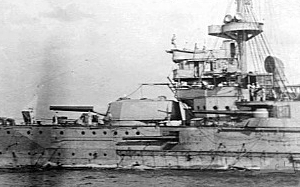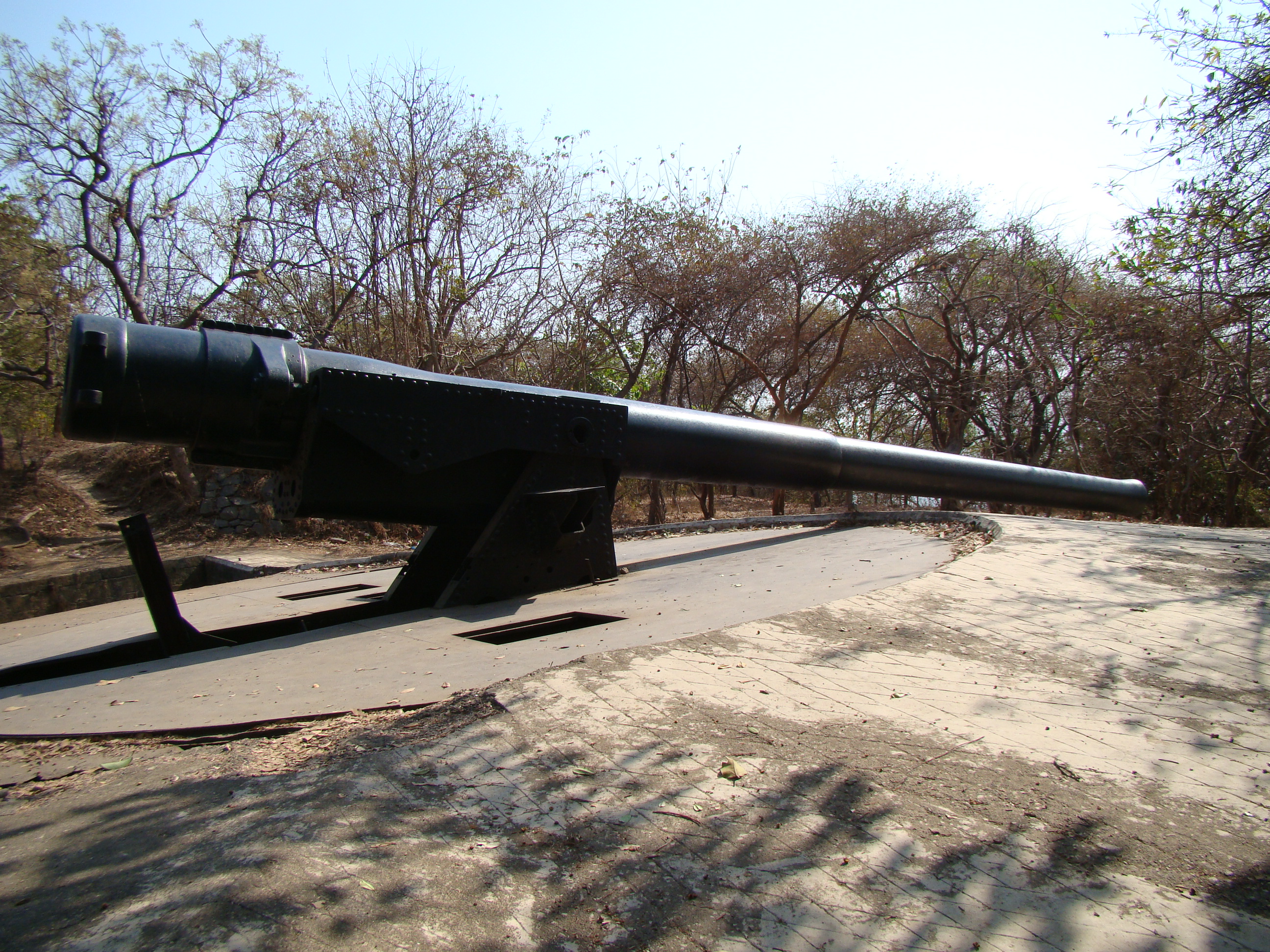BL 7.5-inch Mk II – V Naval Gun on:
[Wikipedia]
[Google]
[Amazon]
The BL 7.5-inch Mk II–Mk V gunsBritain used
 These were built and employed specifically as naval guns and were mounted as secondary armament as a heavier alternative to 6-inch guns, on the following ships :
* ''Warrior''-class armoured cruisers laid down 1903–04, commissioned 1906–07
* ''Minotaur''-class armoured cruisers laid down 1905, commissioned 1908–09
These were built and employed specifically as naval guns and were mounted as secondary armament as a heavier alternative to 6-inch guns, on the following ships :
* ''Warrior''-class armoured cruisers laid down 1903–04, commissioned 1906–07
* ''Minotaur''-class armoured cruisers laid down 1905, commissioned 1908–09

 Mark III guns were built by Elswick Ordnance to arm the battleship ''Constitución'' they were building for Chile. Britain acquired them by default when she bought ''Constitución'' in 1903 to avoid the risk of the ship being acquired by Russia. ''Constitución'' became HMS ''Swiftsure'' in British service.
''Swiftsure'' was decommissioned in 1917 and her guns were used for coast defence in Britain, as siege guns on the Belgian coast near Nieuport for attacking German batteries, and on ''M15''-class monitors.
Mark III guns were built by Elswick Ordnance to arm the battleship ''Constitución'' they were building for Chile. Britain acquired them by default when she bought ''Constitución'' in 1903 to avoid the risk of the ship being acquired by Russia. ''Constitución'' became HMS ''Swiftsure'' in British service.
''Swiftsure'' was decommissioned in 1917 and her guns were used for coast defence in Britain, as siege guns on the Belgian coast near Nieuport for attacking German batteries, and on ''M15''-class monitors.
 * Two Mk II coast-defence guns made by EOC in 1905 and RGF in 1906, on Elephanta Island, Mumbai, India
* Two Mk II coast-defence guns made by EOC in 1905 and RGF in 1906, on Elephanta Island, Mumbai, India
Photographs on Flickr
British 7.5"/50 (19 cm) Mark III 7.5"/50 (19 cm) Mark IV
* Tony DiGiulian
Roman numerals
Roman numerals are a numeral system that originated in ancient Rome and remained the usual way of writing numbers throughout Europe well into the Late Middle Ages. Numbers are written with combinations of letters from the Latin alphabet, eac ...
to designate versions or models ("Mark" abbreviated as "Mk") until after World War II. Hence this articles covers the second through fifth model/version/Mark of British BL 7.5-inch naval guns were a variety of 50- calibre naval guns used by Britain in World War I. They all had similar performance and fired the same shells.
History
Mark II
Mark II guns were originally developed to suit India's coastal defence requirements. During World War I several reserve guns made for India but still in the UK were employed as coastal defence guns in the UK. They were scrapped or sent to India soon after the war.Hogg & Thurston 1972, p. 150Marks II*, II**, V
 These were built and employed specifically as naval guns and were mounted as secondary armament as a heavier alternative to 6-inch guns, on the following ships :
* ''Warrior''-class armoured cruisers laid down 1903–04, commissioned 1906–07
* ''Minotaur''-class armoured cruisers laid down 1905, commissioned 1908–09
These were built and employed specifically as naval guns and were mounted as secondary armament as a heavier alternative to 6-inch guns, on the following ships :
* ''Warrior''-class armoured cruisers laid down 1903–04, commissioned 1906–07
* ''Minotaur''-class armoured cruisers laid down 1905, commissioned 1908–09
Mark III

 Mark III guns were built by Elswick Ordnance to arm the battleship ''Constitución'' they were building for Chile. Britain acquired them by default when she bought ''Constitución'' in 1903 to avoid the risk of the ship being acquired by Russia. ''Constitución'' became HMS ''Swiftsure'' in British service.
''Swiftsure'' was decommissioned in 1917 and her guns were used for coast defence in Britain, as siege guns on the Belgian coast near Nieuport for attacking German batteries, and on ''M15''-class monitors.
Mark III guns were built by Elswick Ordnance to arm the battleship ''Constitución'' they were building for Chile. Britain acquired them by default when she bought ''Constitución'' in 1903 to avoid the risk of the ship being acquired by Russia. ''Constitución'' became HMS ''Swiftsure'' in British service.
''Swiftsure'' was decommissioned in 1917 and her guns were used for coast defence in Britain, as siege guns on the Belgian coast near Nieuport for attacking German batteries, and on ''M15''-class monitors.
Mark IV
Mark IV guns were made by Vickers for the battleship ''Libertad'' they were building for Chile. Britain acquired them by default in 1903 when she bought ''Libertad'' together with ''Constitución''. ''Libertad'' became in British service.Surviving examples
Photographs on Flickr
See also
* List of naval gunsNotes
References
Bibliography
* Hogg, I.V. and Thurston, L.F. (1972). British Artillery Weapons & Ammunition 1914–1918. Ian Allan, London. * Tony DiGiulianBritish 7.5"/50 (19 cm) Mark III 7.5"/50 (19 cm) Mark IV
* Tony DiGiulian
External links
{{DEFAULTSORT:BL 07.5-inch Mk 02 gun Naval guns of the United Kingdom World War I naval weapons of the United Kingdom 190 mm artillery